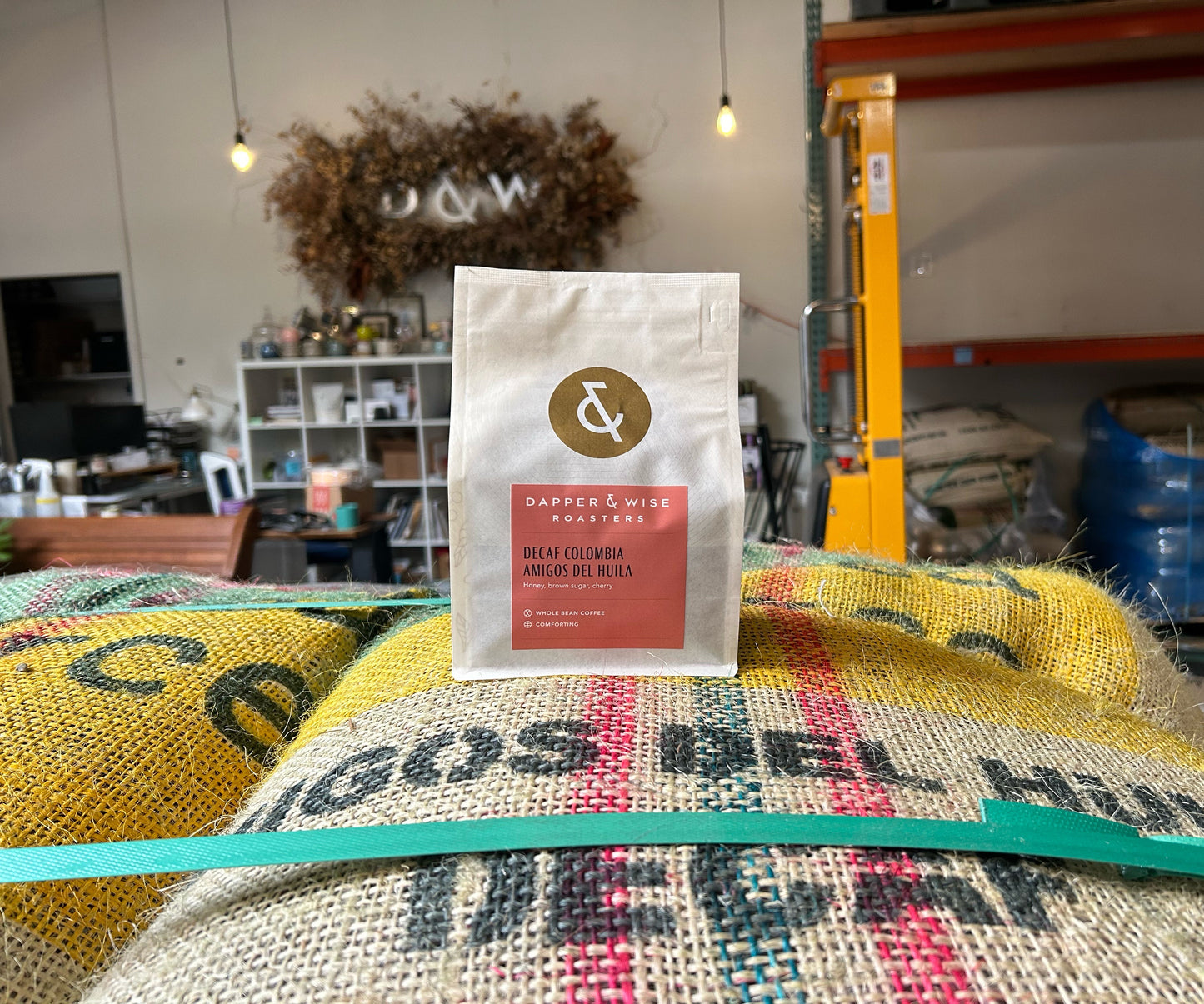
An all time favorite among the roastery crew, the baristas at our sister company Insomnia Coffee, and our ride or die custies. Year after year, Decaf Amigos del Huila tastes caramelly and comforting, and we always look forward to getting it back on our menu.
But, just who are these amigos, aka “friends”, from Huila? Well, it varies from harvest to harvest, but this regional blend tends to contain coffees from the same crew of producers each time around. But why does it vary? The answer to this question touches on the realities of coffee production, as well as the efforts that our importing partner, Shared Source, takes to try to be a good partner to the producers they work with.
It’s not likely that each and every coffee cherry that a farmer produces results in a high quality coffee bean. Unfavorable/unpredictable weather conditions, suboptimal cherry ripeness, labor availability, unfavorable fermentation results, and soil maintenance are just a few of the factors that constantly challenge the production of high quality coffee. So, while a fraction (can be small or large!) of a farmer’s harvest might end up tasting absolutely incredibly amazing, the other fraction might not.

But, coffee that doesn’t taste absolutely incredibly amazing doesn’t mean that it’s low quality, or that it costs a farmer less money to produce. While the quality may not be at a level that we’d want it to be at in order to offer this coffee to you as a single origin, we'd argue that it's still amazing. At the end of the day, farmers need to sell all their coffee, and they deserve a good price for all of it. So, with the goal to be a solid partner to farmers in their network, Shared Source does their best to buy as much coffee from the farmers they work with. Turns out a decaffeinated community lot provides a perfect opportunity for Shared Source to buy a spectrum of qualities from each producer, and pay significantly higher than local market prices for all of it.
At D-dub, we’ve learned that when it comes to blends, the whole is greater than the sum of its parts - whether we blend up roasted coffee, or the green coffee arrives at our roastery pre blended in the form of a community lot. Here’s a boring quick example: One coffee tastes like chocolate and nothing more. Once coffee tastes like nuts and nothing more. One coffee tastes like apples and nothing more. Separately, these coffees are all nice, but simple. Blended, each note complements the others, resulting in a fun and complex cup of coffee!
Lastly, let's ask ourselves: What even is ‘quality’? Who’s defining it here? What’s a farmer’s perception of the quality of their product versus D-dub’s perception of the quality of our product versus your perception of the quality of this product? Who’s perspective matters more? (We vote the farmer’s.)
Here's a quick run-through of how this 'sugarcane' decaffeination process, sometimes referred to as 'Ethyl- Acetate' works:
Coffees are purchased throughout Huila, milled in Valle de Cauca, and then sent to the decaffeination facility, Descafecol, in Manizales. This facility utilizes ethanol, created by the fermentation of sugarcane molasses, mixed with acetic acid to create Ethyl Acetate (EA). The recently milled green coffee then basically has a spa/detox day. It's steamed to open up them pores, allowing for the easier extraction of caffeine molecules, then placed into this EA solution which helps remove the caffeine. The beans soak in this solution for a while, then the solution is drained and fresh stuff is thrown in until at least 97% of the caffeine has been removed. The coffee is then removed from the solution, steamed once more to remove any remaining traces of EA, and then dried, and polished.
